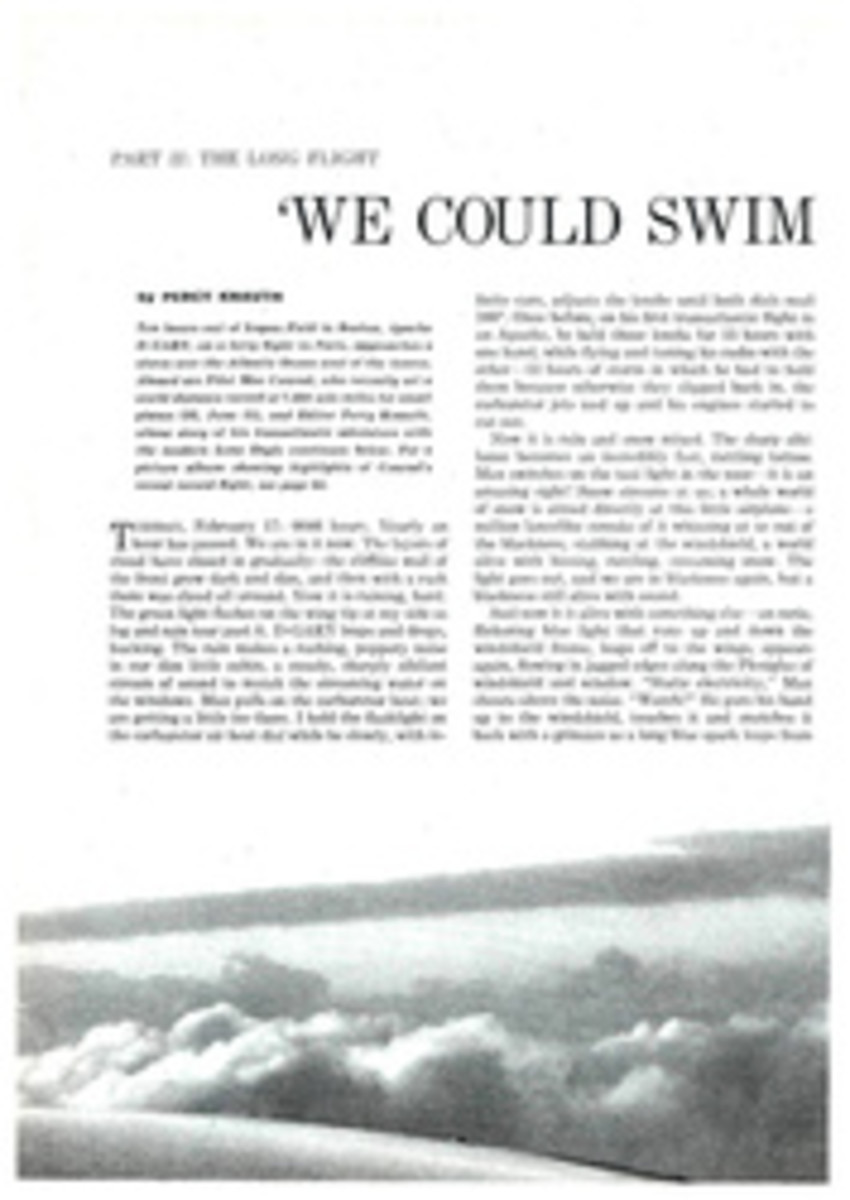
Do it 'en brochette'
This would seem to be the age when kitchens move outdoors as gardens are brought indoors. For either the barbecue pit or the backyard grill or the permanent fireplace for cooking in the open has become standard equipment in almost every American home that boasts a little surrounding land. And the portable grill rides regularly with the family to beach or picnic ground or mountain camp. The male of the species has not only returned to his ancestral function of fire-building, but he takes pride in being an accomplished short-order cook. The female of the species finds that entertaining alfresco, in these days when help is a perennial problem, is far easier than putting on a party indoors. The men have a habit of taking over, the atmosphere is relaxing and the washing up is almost nil.
Frankfurters, hamburgers, halved chickens and steaks have long been favorites for grilling over charcoal outdoors. But during the last decade or so the idea of cooking more varied foods on metal skewers over the charcoal has found an increasing vogue. Pieces of meat arranged en brochette, as the French say, are usually interspersed with vegetables, thus improving the flavor of both. The name which appears to have become generic in the U.S. for all dishes of this type, plain or fancy, is shish kebab—the words in Turkish originally denoting the unadorned lamb tenderloins cooked over an open fire by Near Eastern peasants.
Shish kebab (cabob or kabob in other variations of spelling) is a fine dish for a summer party outdoors. The host needs only to provide enough charcoal grills (or cooking space above barbecue pit or other fireplace) and an interesting combination of foods, sauces and condiments. The guest has all the fun of choosing the things he likes best to eat, spearing them on his skewer and cooking them exactly to his taste. There is no trick to the cooking, except that the filled skewers must be turned over frequently. The host must start charcoal fires early enough so that by mealtime each guest will be able to operate over a bed of glowing coals.
The still life on the opposite page shows some of the makings of a successful shish kebab party. The table should offer a choice of raw meats, vegetables and, if desired, raw fish (a firm fish such as swordfish). All these foods are cut in sizes appropriate for threading on the skewers. There should be long forks to help get hot things off the skewers and onto the plates; also oils and softened butter with accompanying pastry brushes for the application of same before cooking—and during the cooking, if needed—to prevent the meat from becoming dried out.
Here is a list of specific suggestions for an outdoor luncheon or supper party with a difference:
SKEWER PARTY (for 10 hungry people)
15 lamb chops, cut 1½ inches thick, deboned and trimmed of all fat to make rounded shapes
1½ pounds lean top round, cut into 1½-inch cubes (in a marinade of red wine, whole pepper and spices)
1 pound bacon cut in squares
2 pounds swordfish cut in squares ¾ inch thick (marinated in a mixture of either vinegar or white wine, plenty of oil, bay leaves and whole pepper)
2 pounds onions—white, red or yellow—peeled and cut into convenient-sized pieces
1½ cups, more or less, of drained canned pimentos
1 pint of small tomatoes
1 pound mushroom caps
3 green peppers (shells only) cut in squares
Spices: salt and onion salt, coarse and fine pepper, ground cumin seed, orégano
Olive oil, vegetable oil, softened butter
French or Italian bread
Red and white wine, or rosé wine
Candidates for the skewer are legion. Consider, for instance, shrimp marinated in soy sauce to grill with bacon; lamb kidneys to brush with butter, Tabasco and mustard; lamb chunks soaked in garlic and oil to be skewered with both oiled and seasoned eggplant squares and tiny tomatoes; cubes of cheese sandwiches to combine with mustard-brushed ham squares. There are sausages and oysters to think about, not to mention scallops that have been previously simmered a minute or two in wine and herbs. Chili sauce, barbecue sauce and other bottled or homemade sauces are all popular additions in the line of condiments.
As for what to serve as a follow-up to the brochette feast: you might consider either ice cream or a very cold mixture of cut-up fruit served over lemon ice in a half watermelon. This is as alluring on a hot day as a luscious cake and strong coffee in colder weather.
PHOTO
LOUISE DAHL-WOLFE
RAW DELICACIES ready for skewering are (from top) cubes of round steak and squares of bacon; cubes of swordfish (red bowl); tomatoes, pimentos and green peppers (yellow plate); onions; and mushrooms. Green cup holds olive oil for basting.

